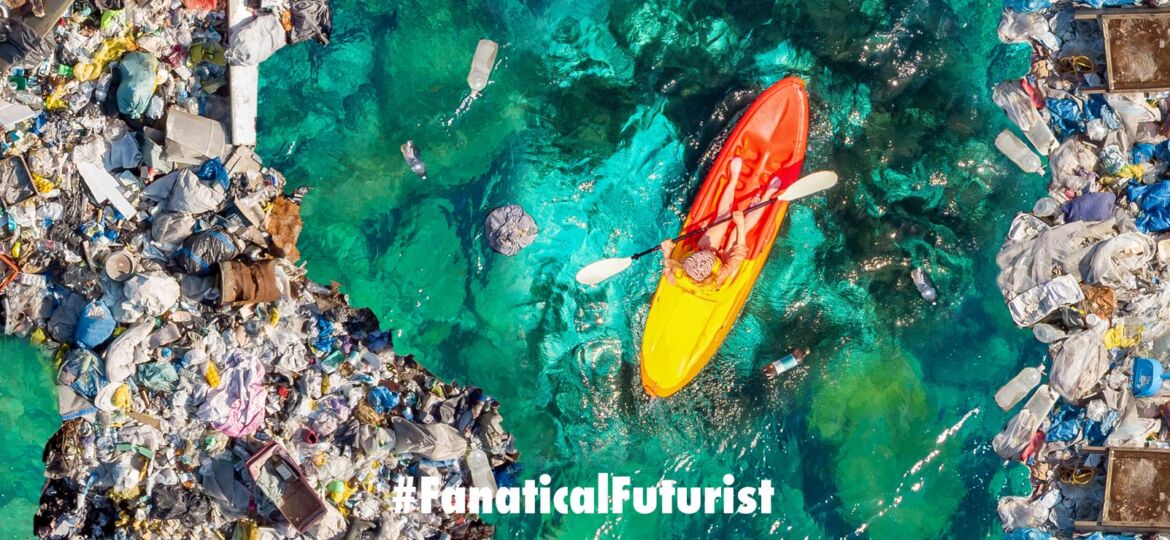
WHY THIS MATTERS IN BRIEF
The ocean is increasingly full of trash so companies are exploring new ways to capture it before it ever gets there.
 Love the Exponential Future? Join our XPotential Community, future proof yourself with courses from XPotential University, read about exponential tech and trends, connect, watch a keynote, or browse my blog.
Love the Exponential Future? Join our XPotential Community, future proof yourself with courses from XPotential University, read about exponential tech and trends, connect, watch a keynote, or browse my blog.
While there has been a lot of focus on reducing plastic waste, and then also recovering waste plastic from the world’s oceans, in the US authorities are trying a slightly new approach to reduce the amount of plastic pollution entering the Pacific after Los Angeles County officials launched an 24 month pilot for America’s first “trash interceptor,” which will be a significant step in stopping more than 30 tons of trash before it flows into the ocean.
The community gathered at the mouth of Ballona Creek in Marina del Rey on Saturday to hear from the people who played huge roles in making the pilot possible. The Ocean Cleanup, a Dutch non-profit organization focused on conservation, built Interceptor 007 and gifted it to Los Angeles county free of charge.
“The beaches of LA are world famous, so if we can show the effect here, I think that message will travel far and wide,” The Ocean Cleanup’s CEO Boyan Slat said. “This might actually become the most important interceptor that we will ever deploy.”
The Interceptor is a fully-automated, solar-powered trash collection device deployed to combat pollution at Ballona Creek. The floating barge dumpster is 70 feet long and 20 feet tall and is part of a pilot project that includes the construction of six moorings on the north and south jetties of the channel, the installation of a river monitoring system to characterize types of trash and educational signage.
See it in action
Inside the interceptor are a catamaran and an automated trash rack with a conveyor belt system. The Ocean Cleanup provided the interceptor at no cost and will also provide monitoring equipment to characterize the system’s success. The district will spend $650,000 for the 18-month pilot program.
LA Public Works Director Mark Pestrella said the pilot aims to see how effective the interceptor will be and if it is something they want to continue doing. According to Pestrella, data will be shared with the community as it is collected.
“I look forward to the data that we’ll be able to collect in this two-year pilot, and we’ll have a decision to make, whether we keep it or whether we don’t,” LA County Supervisor Holly Mitchell said. “But I look forward to the role we can play here in LA County.”
In May two Play del Rey residents filed a petition against the interceptor’s placement at Ballona Creek, stressing the importance of considering less disruptive means of collecting trash from the creek, including a trash capture project at Alla Road.
Although the interceptor project will result in “significant adverse environmental impacts,” the county completed neither a negative declaration nor an environmental impact report, circulated neither for public review and comment and presented no mitigation measures or project alternatives to the community, according to the petition.
Community members and organizations at the launch event, however, said they were excited about the change they could see with the interceptor.
“Sometimes you just really have to get on committees and in the politics side of it and really work to see this happen,” said Rhonda Harper, founder of Black Girl Surf. “This thing right here [the interceptor] is amazing.”
The Ocean Cleanup has already deployed Interceptors in Indonesia, Malaysia and the Dominican Republic and said they chose to put an interceptor at Ballona Creek after seeing the abundance of trash in the water.
Work to install interpretive panels, monitoring equipment and other project elements is set to continue through this month, so it will be exciting to see the impact this project has on the oceanic plastic pollution.















